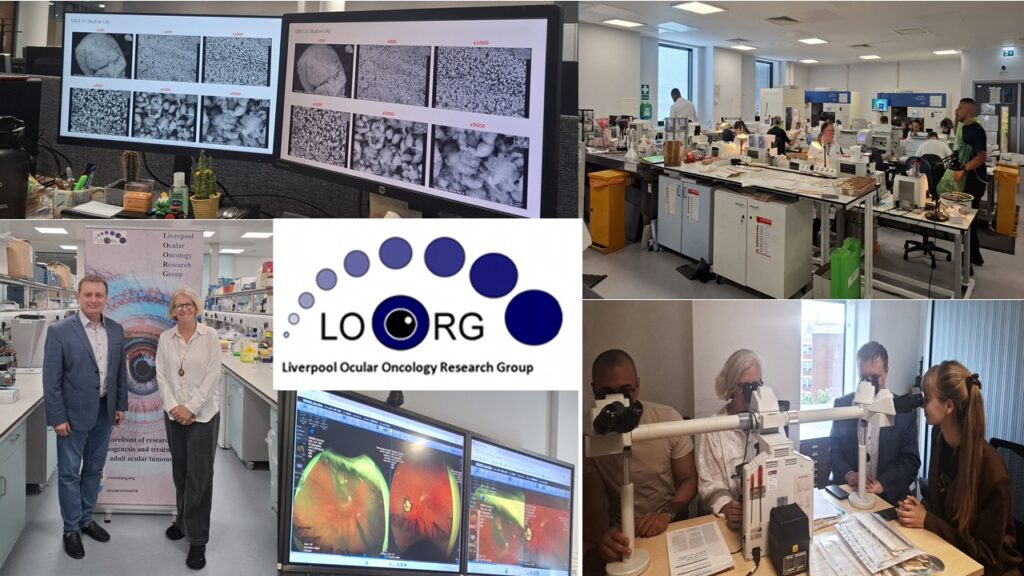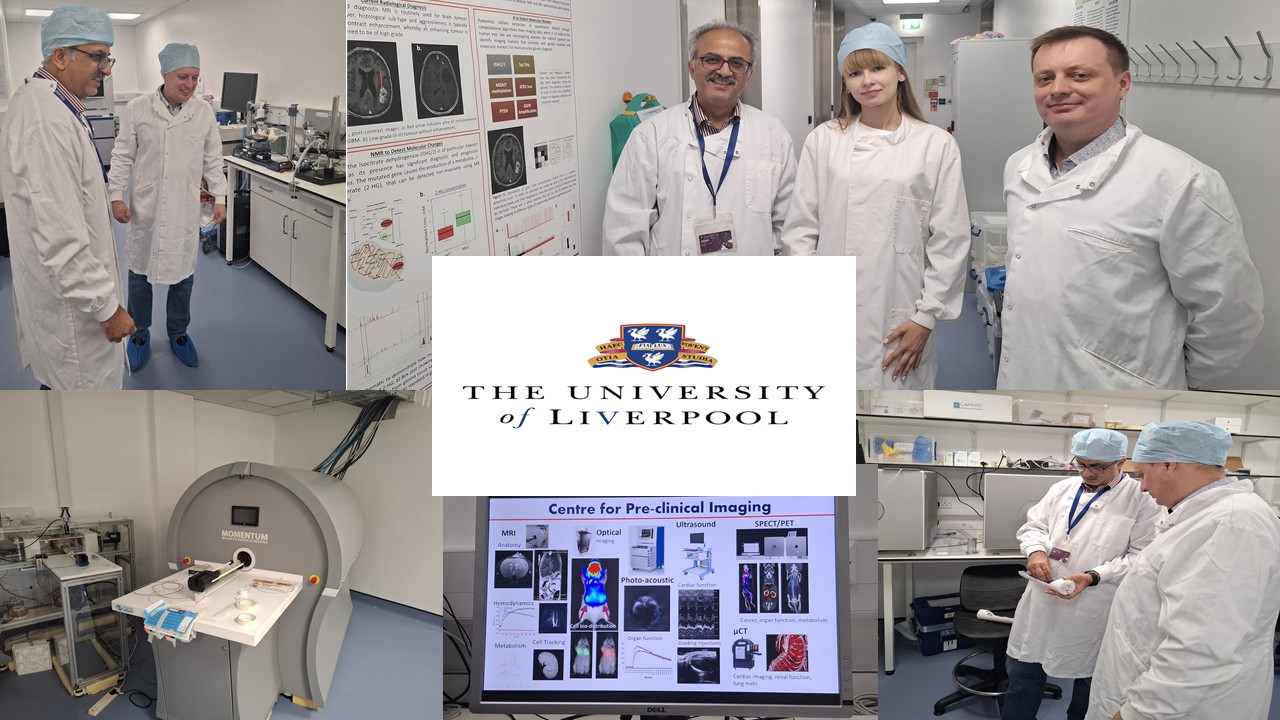Professor Roman Moskalenko, Head of the Department of Pathological Anatomy, and Ruslana Lakhtaryna, a postgraduate student, participated in a scientific internship from July 14 to August 1, 2025, at the Institute of Life and Medical Sciences, University of Liverpool (UK). The visit took place as part of the “Twinning Initiative” between UK and Ukrainian universities.
The visit was by invitation of Professor Sarah Coupland, who is also the President of the Pathological Society of Great Britain and Ireland (PathSoc) and a leading global expert in ophthalmic oncology. The goal of this academic mobility program was to further develop the fruitful cooperation with Professor Coupland in the promising field of digital pathology. Our current joint work is focused on developing an innovative algorithm for diagnosing atypical tumor cells based on an analysis of their nuclear characteristics. The foundation of this collaboration is the joint supervision of Ruslana Lakhtaryna’s doctoral research in digital pathology, which demonstrates the long-term nature of our partnership in training scientific personnel. Professor Moskalenko’s visit program also included a detailed discussion with Professor Coupland on the future strategic development of our joint project, including exploring potential research directions and preparing joint applications for research funding for future scientific initiatives.
The main location for the internship was the Liverpool Ocular Oncology Research Group. During the internship, Professor Roman Moskalenko gained a detailed understanding of major oncological pathology of ocular tissues, the rules for preparing gross specimens of the eyeball for histological and molecular-biological studies, and participated in a meeting of the multidisciplinary team at the Ocular Pathology Department of the Liverpool University Hospital. He also held meetings and discussions with postgraduate students of the Liverpool Ocular Oncology Research Group on topics like uveal melanoma and the application of artificial intelligence in its diagnosis. Particularly incredible were the daily clinical case reviews with Professor Sarah Coupland and the joint study of a unique collection of rare ophthalmic pathology slides from Professor W.R. Lee (Glasgow) on a multi-headed microscope. In addition, Professor Coupland facilitated meetings with practicing histopathologists (Drs. Nikhil Ravikumar and Yasmeen Mir) and arranged tours of the histology and molecular-biological laboratories at the Liverpool University Hospital. A detailed familiarization with the electronic document management system, the specifics of tissue preparation and storage, and the work of doctors and technical staff in UK pathology departments was also very useful.
Several meetings were held with staff from the Department of Eye and Visual Sciences. The Head of the department, Professor Reinhold Medina, provided an overview of the unit’s work and its main research directions. During a meeting with Professor Yalin Zheng, there were interesting discussions about research on artificial intelligence in the diagnosis of eye diseases and opportunities for collaboration were discussed. A particularly engaging meeting in the Department of Eye and Visual Sciences was with Drs. Victoria Kearns and Kevin Hamill, who are developing a biotechnological direction in ophthalmology and studying new biomaterials and technologies.
Meetings with representatives of the Centre for Cell Imaging (Dr. Marco Marcello), the Centre for Proteomics (Dr. Howbeer Mohammed Ali), and the Centre for Preclinical Research (Professor Harish Poptani) were highly promising for potential cooperation. The scientists from these research centers demonstrated the impressive research infrastructure and capabilities of the University of Liverpool.
It’s hard to find words to express our gratitude to Professor Sarah Coupland for organizing such a rich scientific internship program, facilitating networking, and providing comprehensive, friendly support. It was an incredible experience.
The staff of the Department of Pathological Anatomy expresses its sincere thanks to the coordinators from the University of Liverpool and Sumy State University for their excellent work in organizing the visit and ensuring effective cooperation between the scientific groups of the Medical Institute and the Institute of Life and Medical Sciences.






